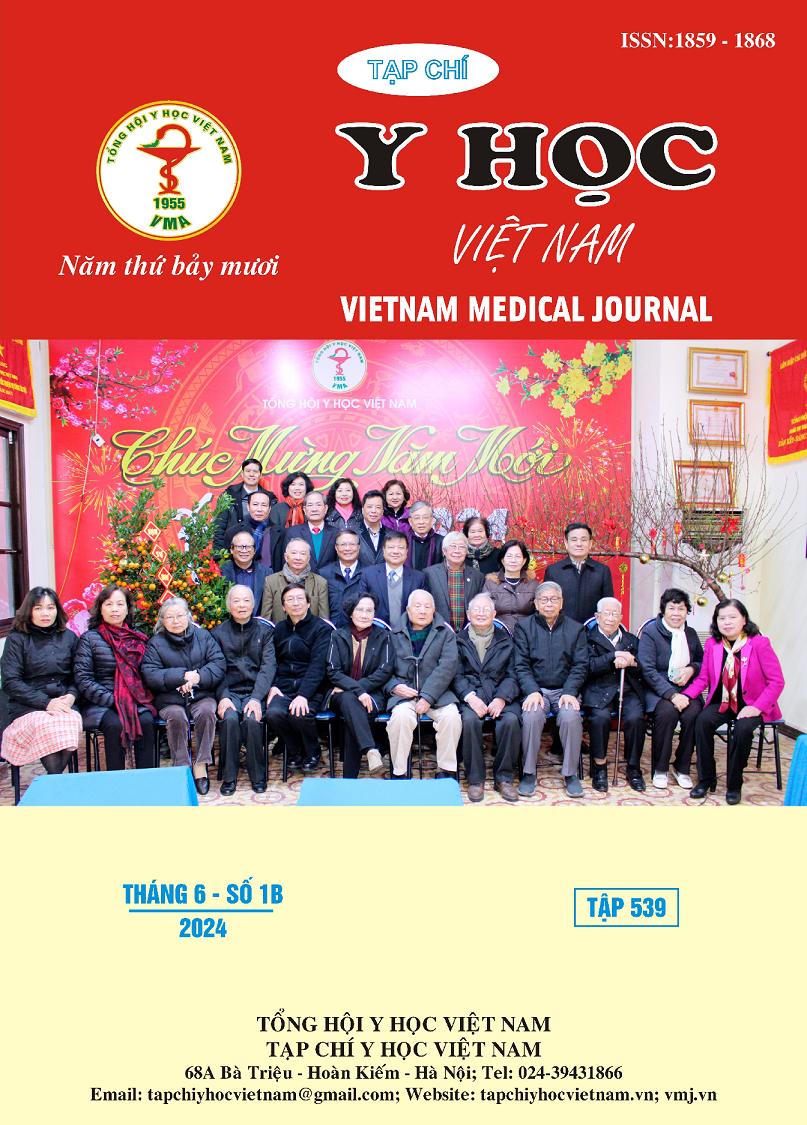DIỄN TIẾN HÌNH THÁI KHỚP CẮN TỪ BỘ RĂNG SỮA ĐẾN HỖN HỢP VÀ VĨNH VIỄN Ở NHÓM CÓ TƯƠNG QUAN MẶT PHẲNG TẬN CÙNG RĂNG CỐI SỮA THỨ HAI DẠNG THẲNG
Nội dung chính của bài viết
Tóm tắt
Đặt vấn đề: Ở bộ răng sữa, có ba dạng tương quan mặt phẳng tận cùng răng cối sữa thứ hai là dạng thẳng, dạng bậc xuống gần và dạng bậc xuống xa. Trong đó, tương quan dạng thẳng thường chiếm tỉ lệ cao nhất và được xem là một trong những yếu tố của “khớp cắn lý tưởng” ở bộ răng sữa. Tuy nhiên, vẫn có tỉ lệ cao từ 20-50% mặt phẳng tận cùng dạng thẳng chuyển thành tương quan răng cối lớn thứ nhất hạng II bất thường ở bộ răng vĩnh viễn. Chính vì thế, nhiều tác giả cho rằng cần phải xem xét lại việc cho rằng tương quan mặt phẳng tận cùng dạng thẳng là một trong những tiêu chí của một khớp cắn lý tưởng ở bộ răng sữa. Tại Việt Nam, hiện nay chưa có nghiên cứu nào đánh giá diễn tiến hình thái khớp cắn của nhóm có tương quan mặt phẳng tận cùng răng cối sữa thứ hai dạng thẳng trong toàn bộ quá trình phát triển của bộ răng. Vì vậy, chúng tôi đã thực hiện nghiên cứu “Diễn tiến hình thái khớp cắn từ bộ răng sữa đến hỗn hợp và đến bộ răng vĩnh viễn ở nhóm có tương quan mặt phẳng tận cùng răng cối sữa thứ hai dạng thẳng” thật sự rất có giá trị trong cả nghiên cứu lẫn điều trị chỉnh hình răng mặt. Từ đó có thể đưa ra những kế hoạch phòng ngừa và can thiệp thích hợp giúp trẻ đạt được tương quan răng cối lớn thứ nhất hạng I bình thường ở bộ răng vĩnh viễn trong tương lai. Mục tiêu: Đánh giá diễn tiến hình thái khớp cắn của nhóm có tương quan mặt phẳng tận cùng răng cối sữa thứ hai dạng thẳng từ giai đoạn bộ răng sữa đến bộ răng hỗn hợp và bộ răng vĩnh viễn. Đối tượng và phương pháp: Nghiên cứu dọc trên 48 tương quan mặt phẳng tận cùng răng cối sữa thứ hai dạng thẳng ở bộ răng sữa, đánh giá sự thay đổi tương quan này từ bộ răng sữa đến tương quan R6 ban đầu ở bộ răng hỗn hợp và tương quan R6 ở bộ răng vĩnh viễn. Kết quả: Trong 48 trường hợp có tương quan mặt phẳng tận cùng răng cối sữa thứ hai dạng thẳng, khi chuyển từ giai đoạn bộ răng sữa sang bộ răng hỗn hợp, tỉ lệ chuyển thành tương quan R6 hạng I và R6 hạng II 50% lần lượt là 15% và 85%. Khi chuyển từ giai đoạn bộ răng hỗn hợp sang bộ răng vĩnh viễn, 100% trường hợp tương quan R6 hạng I sẽ duy trì tương quan này. Đối với nhóm có tương quan R6 hạng II 50% ở bộ răng hỗn hợp, khi chuyển sang bộ răng vĩnh viễn, 63% sẽ chuyển thành tương quan R6 hạng I và phần còn lại vẫn giữ nguyên tương quan hạng II 50% chiếm 37%. Khi chuyển từ bộ răng sữa đến bộ răng vĩnh viễn, đa số sẽ chuyển thành tương quan R6 hạng I bình thường với tỉ lệ 69%, số ít còn lại sẽ chuyển thành hạng tương quan R6 hạng II 50% với tỉ lệ 31%. Kết luận: Trong quá trình phát triển từ bộ răng sữa đến bộ răng vĩnh viễn, tương quan mặt phẳng tận cùng răng cối sữa thứ hai dạng thẳng dù được xem là tương quan lý tưởng ở bộ răng sữa nhưng có tỉ lệ chuyển thành hạng II ở bộ răng vĩnh viễn cao hơn 30%.
Chi tiết bài viết
Từ khóa
Mặt phẳng tận cùng răng cối sữa thứ hai dạng thẳng, bậc xuống gần, bậc xuống xa.
Tài liệu tham khảo
2. Hoàng Tử Hùng (2001). Cắn khớp học. Nhà xuất bản Y học.
3. Nguyễn Minh Hùng, Nguyễn Thị Kim Anh (2013). Nghiên cứu dọc sự thay đổi tương quan khớp cắn vùng răng cối từ bộ răng sữa sang bộ răng vĩnh viễn. Y học TP Hồ Chí Minh. 17(2).
4. Lê Thị Cẩm Tú (2011). Tình trạng sai khớp cắn ở bộ răng sữa. Tiểu luận tốt nghiệp Bác sĩ Răng Hàm Mặt. Đại học Y Dược TP. Hồ Chí Minh.
5. Đống Khắc Thẩm (2004). Chỉnh hình răng mặt. Nhà xuất bản Y học TP. Hồ Chí Minh.
6. Bishara SE (1988). Changes in the molar relationship between the deciduous and permanent dentitions: a longitudinal study. Am J Orthod Dentofacial Orthop. 93(1):19-28.
7. Nanda RS (1973). Age changes in the occlusal pattern of deciduous dentition. J Dent Res. 52(2):221-4.
8. Tsourakis AK (2014). Class II malocclusion: The aftermath of a “perfect storm”. Seminars in Orthodontics. 20(1):59-73.


